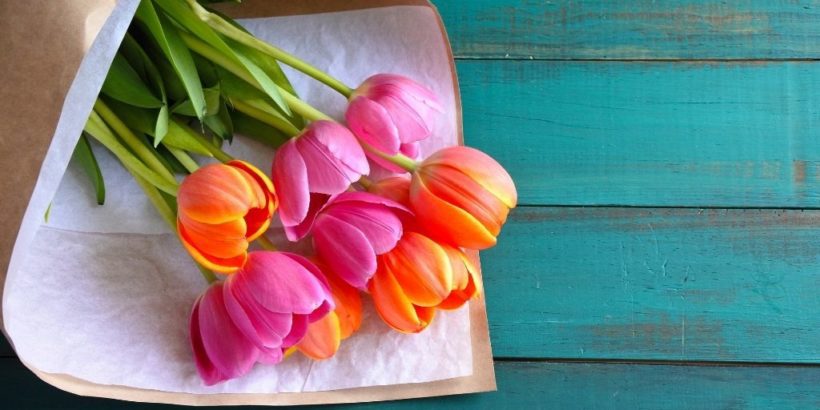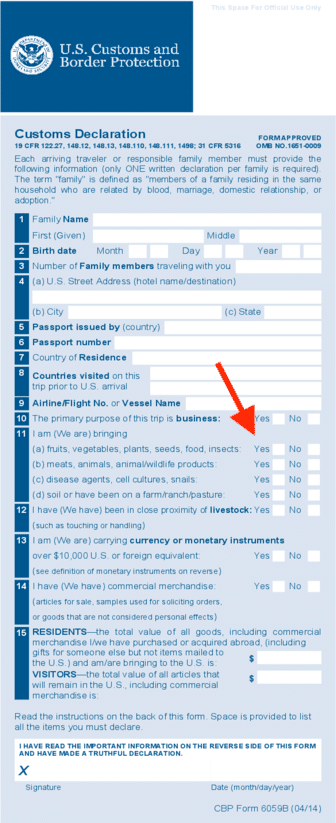Transporting plants via plane is not quite as straightforward as you might have thought. On the one hand, you are given more leeway by TSA than you might imagine. But on the other hand there are quite a few restrictions that you need to be aware of.
In this article, I’ll tell you everything you need to know about bringing all sorts of different plants on a plane. I’ll also give you some insight into the rules and common mistakes people make when flying both domestically and internationally.
Table of Contents
Can you bring plants on a plane?
Yes, you can bring plants on a plane but you need to be aware of some of the unique restrictions and challenges that you’ll face. Keep reading below to find out more about some of the obstacles that you might encounter and how to best avoid them.
Tip: Use the free app WalletFlo to help you travel the world for free by finding the best travel credit cards and promotions!
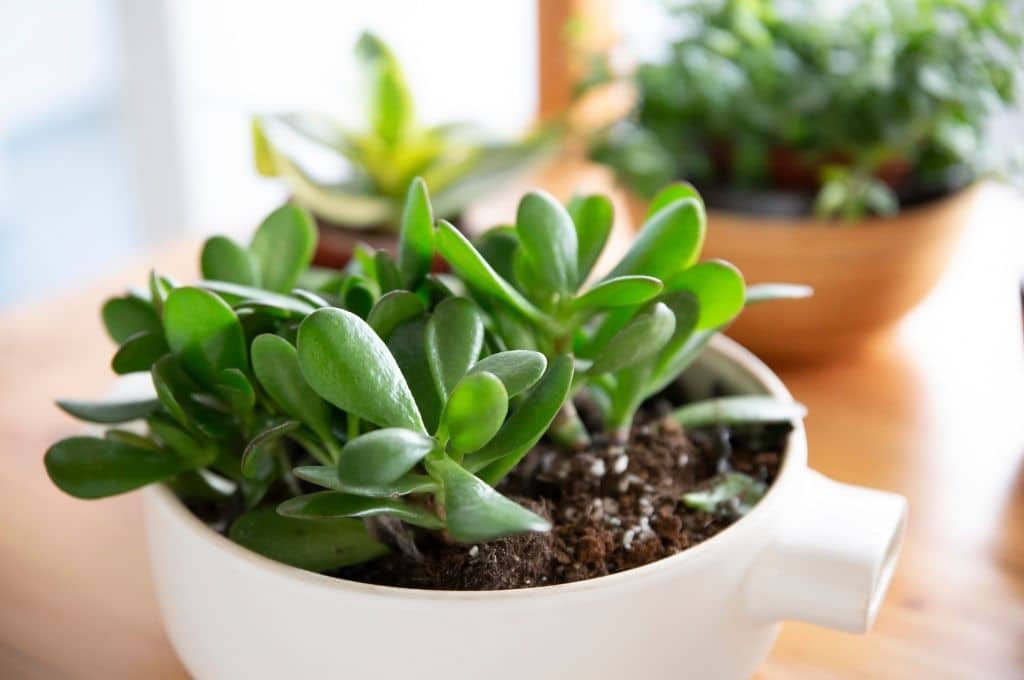
Bringing plants as a carry-on
If you are packing your plant as a carry-on item here are the major factors to consider.
TSA rules on plants
TSA allows you to bring plants through airport security as a carry-on item so long as they can fit in the overhead bin or underneath the seat of the airplane .
This means you should be able to bring flowers, bouquets, and even house plants on a plane.
But you need to be aware of a couple of things with respect to TSA.
If you are carrying a bouquet, check for pins that might be used to hold the bouquet together. If TSA finds these they may confiscate them as they could consider them a prohibited sharp object.
The TSA liquid rule states that you can only bring liquids through airport security in 3.4 ounce containers that fit into a quart sized bag.
Some plants — especially those with the small vial containers at the bottom — may contain water which could be problematic (more on how to deal with that below).
Related: TSA Marijuana Rules Explained (Flying with Weed)
Airlines policies on plants
For the most part, TSA rules and the carry-on rules for US airlines are generally aligned.
If something is allowed through TSA it would generally be allowed for the airline.
But that’s not always the case.
For that reason, sometimes you have to verify that you are complying with TSA AND the specific airline you are flying with.
This can be done by researching online or calling up the airline.
Some airlines like Delta make it pretty clear that you can bring some plants on your flight as long as you comply with local agriculture restrictions for your destination.
Delta states:
Both non-edible and edible perishable items are allowed on board, as part of your carry-on baggage — provided there is no violation of agricultural restrictions for the destination country.
They go on to state that perishable items include:
Flowers of varying sorts, including cut flowers, floral displays and vegetable plants
Aircraft size and seat
You’ll also want to consider the size of your aircraft.
Indeed even TSA notes, “Check with the airline to ensure that the item will fit in the overhead bin or underneath the seat of the airplane.”
For shorter flights on regional planes you may have limited overhead storage bin space.
If you are carrying around a large plant it may not be practical for you to stuff it in the overhead storage bin space which means it would have to go under your seat.
If you were sitting in a bulkhead seat or in an emergency exit row, that could be a big problem.
Tip: If you plan on keeping your plant by your side, try to get a window seat and place the plant between your leg and the fuselage.
Your carry-on allowance
Typically, if you purchase a standard economy ticket you will be allowed one carry-on item and one personal item.
Depending on the size of your plant, the plant may constitute a carry-on or a personal item.
However, if the plant is small enough (and if the airline is not super strict about carry-ons), your plant may qualify as a “free” third item similar to what airlines do when passengers bring food on the plane.
The optimal way to pack
If you are simply bringing a fresh cut flower or bouquet, you should be able to keep that in your hand for the majority of your journey.
Your biggest challenge will be keeping them in good condition as you bump shoulders with other passengers, handle your luggage, etc.
(This is why I would recommend not giving flowers as a gift to someone who is about to embark on a flight — it can be quite a hassle to keep up with them.)
If you are bringing a potted plant then you need to be extra careful about not breaking the pot and not spilling a bunch of soil.
For this reason, you probably want to wrap up the plant.
Consider wrapping a bag around the base so that you can contain the soil. You might also use a sheet or plastic wrap to wrap up the branches if the plant is on the larger side.
Tip: Be careful not to go overboard because if TSA wants to inspect the plant they will require you to takeoff all of the wrapping which could be pretty time-consuming and possibly cause you to damage the plant as you will have to re-wrap it once again.
Complying with the TSA liquids rule while keeping your plant alive
When taking your plant through airport security as a carry on one of the biggest concerns is the liquid.
If the plant comes in a vase, bowl, or vial with water you will most certainly need to dump it out prior to going through the security checkpoint.
If your plant needs water then you can consider wrapping it in a wet paper towels/cloths and inserting that into a clear plastic wrap or bag. You might also want to secure the plant and towels with rubber bands/elastic.
That should help you get through security and then once you are past the checkpoint you can look into putting the flowers into some type of vase/vial with water.
There are some vials you can purchase that are supposed to be spill proof but some of those still allow liquid to seep out.
For that reason, I would still try to carry your flowers vertically instead of lying them down on the floor of the plane.
If you are not able to keep your plants and water on the plane, just know that when it comes to fresh flowers, they can often survive for quite some time without water.
Warmer temperatures will cause flowers to die sooner and different types of flowers will have different lengths of time they can go without water.
However, if you wrap the plant in a wet paper towel or cloth, it may be able to survive for a couple of days.
A couple of things to consider about transporting fresh cut flowers:
- Make sure that the wet cloth or paper towel is compressed against the plant without large air pockets.
- Don’t forget to trim (re-cut) the stem before it’s placed back in a vase.
Something very important to keep in mind is that if you are traveling to a state with agriculture restrictions or to an international destination with such restrictions, the plant will probably have to be soil free (bare root).
Potted plants
Potted plants that are small or that could fit within a carry-on bag should not be an issue for most airlines.
They only become problematic when they are oversized or when flying to destinations with agricultural restrictions.
X-ray machines
Your plant will have to go through the security point x-ray machine in most situations.
Some people worry about their plants getting damaged from the x-ray machine. I looked into some of the science but it was a little bit over my head to be honest.
If you are worried about potentially harmful x-rays, a TSA agent may allow you to refuse the x-ray machine but in that case the plant will have to go through a closer inspection (and get swabbed).
Related: TSA Body Scanners: Images & Machines Explained
Different types of plants
Bringing a fresh cut flower or arrangement through airport security is pretty straightforward but a lot of people have questions about other types of plants like cacti and dried plants.
So we supplied some additional info to help you navigate those sometimes *prickly* situations.
Thorny plants and cacti
You would think that plants with thorns such as roses, cacti, and other succulents could be very problematic when going through airport security.
First, they could be a hazard to the TSA agents who have to handle your baggage.
Second, they could be a hazard to other passengers who might come in to contact when storing their luggage, reaching under seat. etc.
And finally, one could argue that a thorny bush could become a weapon to use against the crew on a plane.
Despite all of that, TSA has verified that at least some cacti are allowed through airport security.
My guess is that as long as the size of the thorny object remains reasonable (small), you can probably get it through.
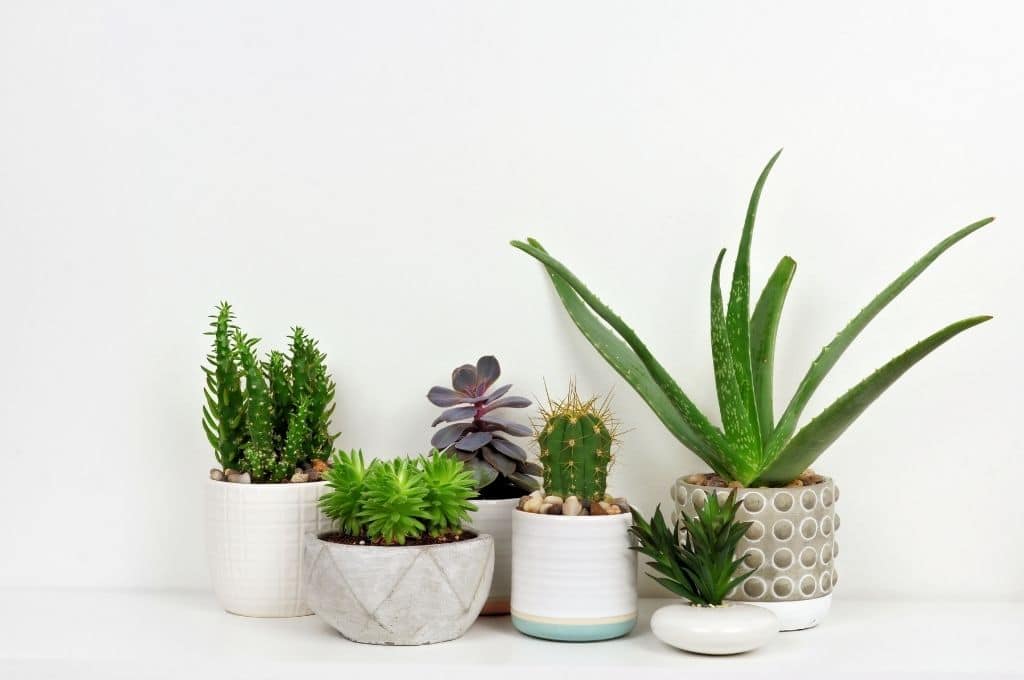
Trees
Some people might try to bring actual trees through airport security and on a plane.
If you have a small tree like a bonsai tree or a miniature Christmas tree there’s a good chance you will be able to bring it through.
But if you were trying to bring something much larger like a full-sized Christmas tree that’s simply going to be too big to be considered a carry-on item or personal item and you will have to check that item.
Other items like wreaths or mistletoe should not be a problem.
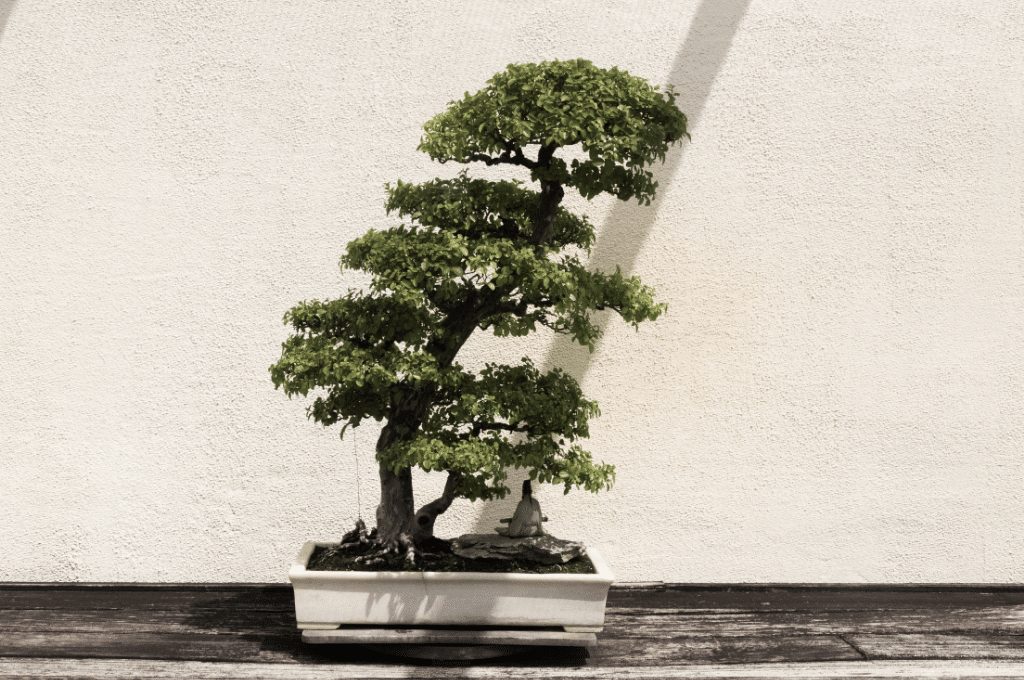
Dead (or dried) plants
There is no reason why dead or dried plants would not be allowed if live plants are.
If anything, dried plants pose less of a problem because you won’t have to carry them with water or soil so you don’t have those same concerns.
So you should be okay with your dried Dragon’s Breath, Baby’s Breath, Strawflower, etc.
But again some destinations may have the same restrictions on both live and dead plants so you will need to inquire about those.
Because dried plants are so brittle you will want to take extra precautions to prevent damage to them.
Consider putting them in a container with tissues or some other type of soft substance (bubble wrap or air-pillows) to keep them from breaking.
Plant seeds
Plant seeds are allowed through TSA security and with most airlines.
Again, you just need to be aware of potential restrictions at your destination, as seeds often need to be declared.
I would recommend storing them in a clear plastic bag if possible so that a TSA agent could easily inspect them if needed.
Related: How Much Cash Can You Travel With?
Seedlings and saplings
Seedlings and saplings should be treated just like other live plants and should be allowed. In fact, because these will often be small they should be some of the easiest plants to travel with.
You just need to be conscious about the water content level for these when bringing them through airport security.
Fake plants
Fake plants should be treated just like any other object.
You could potentially run into issues if the fake plant looks very real and is mistaken for a real plant so you might need to clarify that to a TSA agent or Customs agent.
Agricultural restrictions
Not every state will allow you to simply bring in plants without some type of inspection or declaration.
To make sure that you are not violating the law and bringing in plants to another state, check the national plant board and/or check with the appropriate department of that state.
For example, if you have questions about bringing plants into California then you may want to contact the California Department of Food and Agriculture.
States don’t always have strict ways to enforce their restrictions on domestic travel so it’s possible you may not even run into an inspection when you touch down.
But that does not mean that you shouldn’t take precautions to comply with the local regulations.
You could seriously disrupt the ecosystem of an entire region by introducing something foreign.
Also, all it takes is one small outbreak for a state to immediately clamp down on plants coming in and you never know when that could happen.
Travel to Hawaii
Hawaii will allow you to bring different plants into the state but there are some conditions.
First, you will need to declare your plants on the “Plants and Animals Declaration Form,” which you should receive on your flight.
The plants will then need to be inspected at the Agricultural Inspection Counter located near the exits in the baggage claim area.
All plant material must be free of soil, insect pests and signs of disease.
You should be aware that there are certain plants that require advanced approval in order to bring them into the state of Hawaii.
These include plants like:
- Pineapple and bromeliad plants and fruits
- Passion fruit plants and seeds
- Cruciferous root vegetables (radish, turnip, daikon, horseradish, rutabaga)
- Corn on the cob
- Citrus and pulpy fruits from Florida & Puerto Rico
- Taro and dasheen
- Coconuts
- Orchid plants require an import permit and certificate of origin.
- Plants in the grass family (including sugar cane and bamboo).
- Coffee plants and plant parts including seeds.
- Palm plants
- Aster, chrysanthemum, hollyhock, dahlia and gladiolus plants
- Pine plants
- Sorghum, broomcorn and sudan grass
International travel
The requirements may differ based on whether you are traveling from the US to an international destination or traveling into the US. I’ll cover instructions for each scenario below.
Traveling from the US
When traveling from the US to an international location, you will likely experience similar rules like you were traveling to a place like Hawaii.
Certain types of plants may be outright banned and you can count on soil not being allowed. You might need to obtain advanced permission for certain plants and will likely have to declare all of your plants upon arrival.
Because TSA is not required to enforce foreign agricultural requirements, it will be on you to do the research ahead of time to make sure you are in compliance with the country’s regulations.
Traveling into the US
A lot of people like to bring flowers back from certain locations like orchids from Singapore/Thailand or tulips from Amsterdam. This can be perfectly acceptable but you have to follow US regulations.
According to US Customs and Border Protection (CBP), “All travelers entering the United States are REQUIRED to DECLARE meats, fruits, vegetables, plants, seeds, soil…”
Most likely you will be checking “Yes” on Question 11 of the CBP Declaration Form 6059B as pictured below.
Declaring items might mean slightly longer wait times to get through customs but you don’t want to skip this step because you could get hit with a $1,000+ fine.
Moreover, if you have a membership with Global Entry you could lose it by failing to declare items.
Tip: When purchasing your plants abroad, look for some type of label that says “safe for US” which can give you added assurance that you can bring them in.
Be aware that some plants will require advanced permission before bringing them in to the country, especially if they are intended for growing (propagative).
In some instances, you may need to obtain a foreign phytosanitary certificate in advance.
If you need confirmation on the certificates, contact the USDA/APHIS Plant Protection and Quarantine Permit Unit at (301) 851-2046 or (877) 770-5990.
Final word
Taking your plants on a plane is relatively straightforward when you are traveling around the US.
But if you are heading to certain destinations like Hawaii or traveling internationally, the stakes get much higher.
The keys are to make sure that you comply with TSA and airline rules, pack properly, and that you always prioritize agricultural regulations.
Daniel Gillaspia is the Founder of UponArriving.com and the credit card app, WalletFlo. He is a former attorney turned travel expert covering destinations along with TSA, airline, and hotel policies. Since 2014, his content has been featured in publications such as National Geographic, Smithsonian Magazine, and CNBC. Read my bio.

